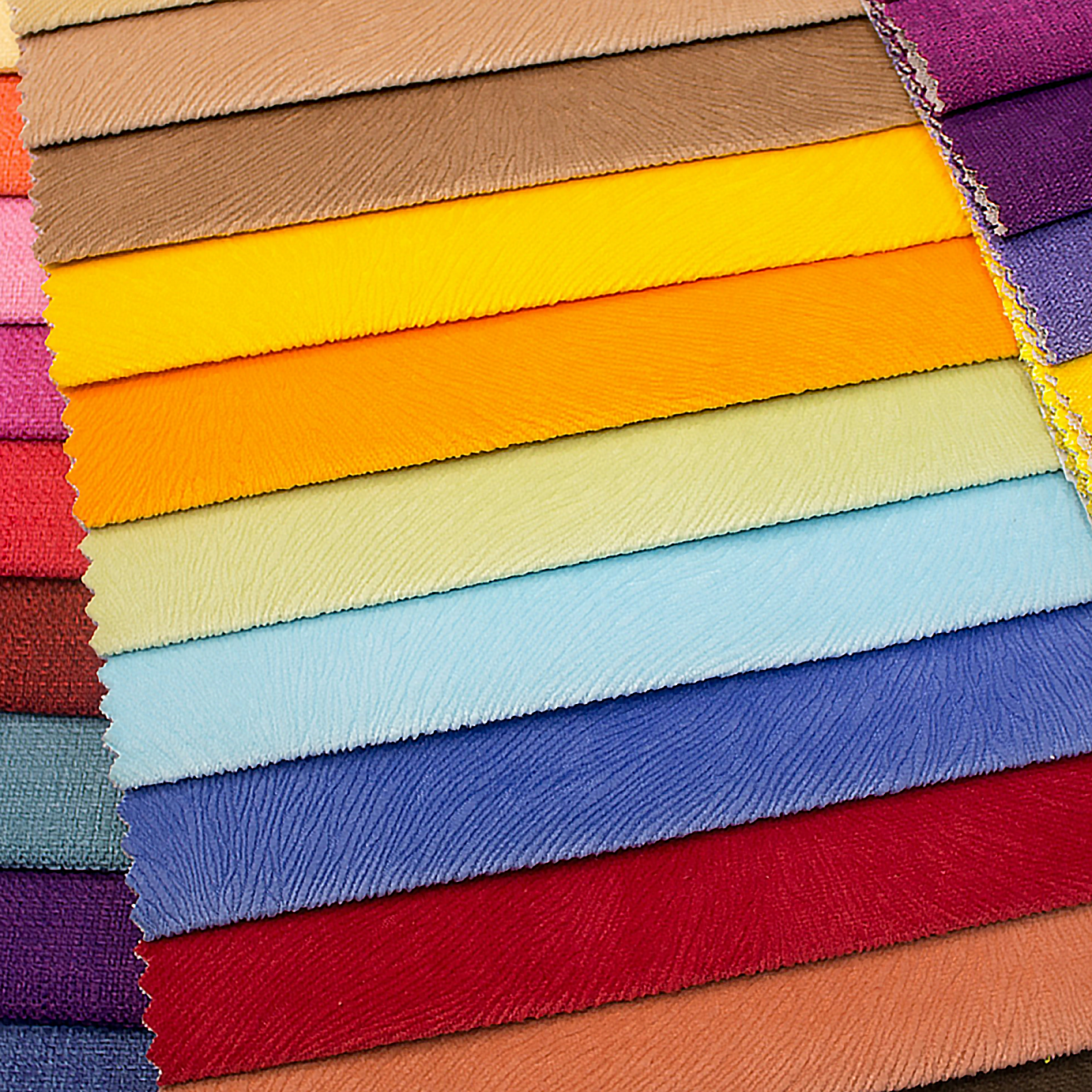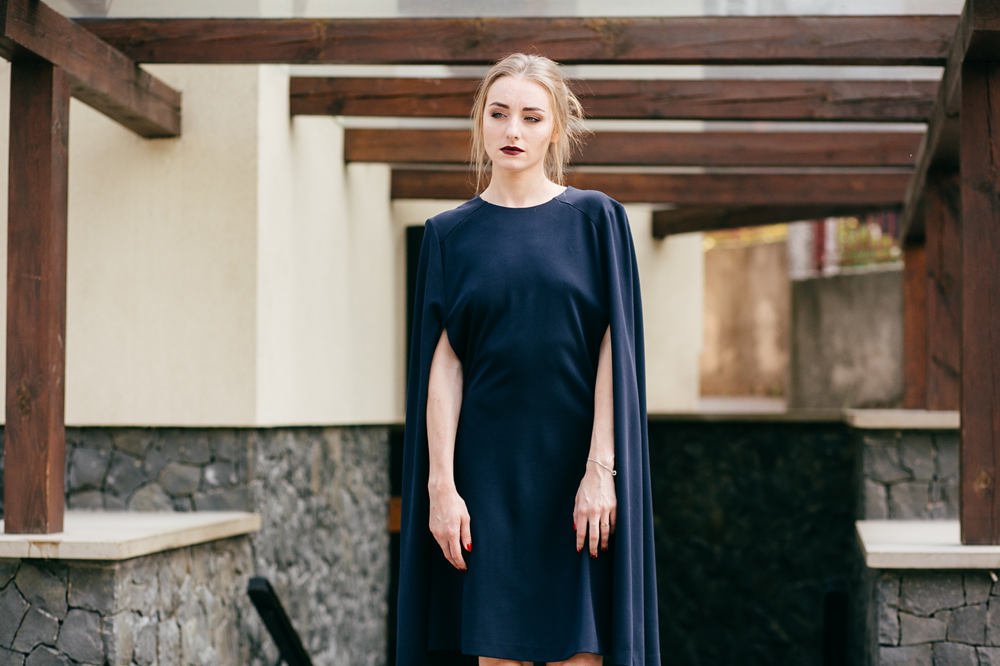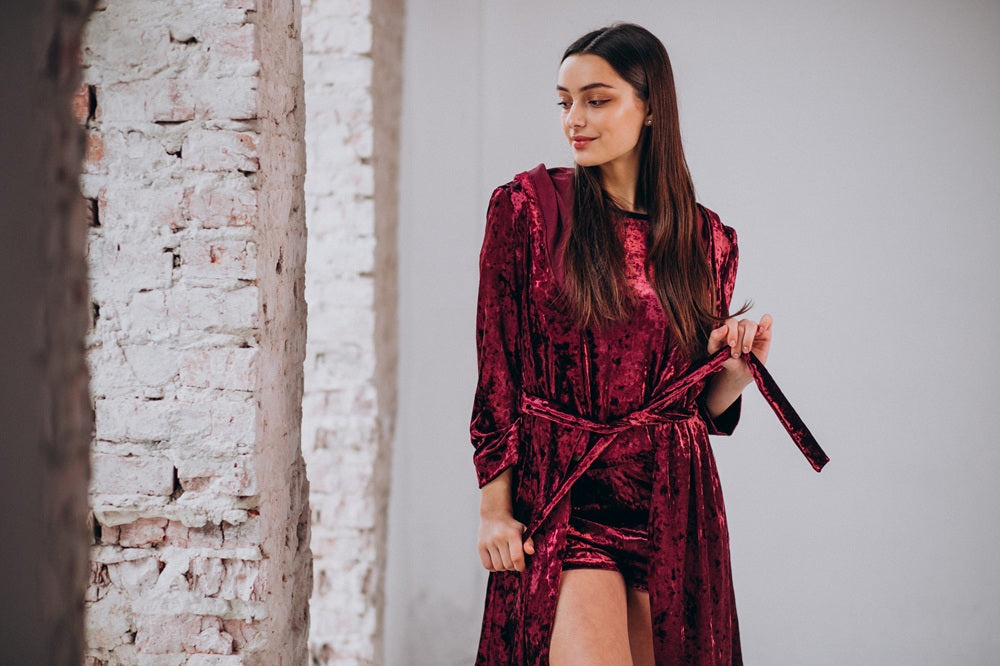Velvet is made from a variety of fibers such as silk, cotton, polyester, rayon, nylon, and wool. But here's the thing: the material itself isn't what makes velvet velvet. It's all about the construction. That plush, can't-stop-touching-it texture comes from a special weaving process that creates short, evenly distributed fibers standing upright from the base fabric. This gives velvet its signature softness and gorgeous way of catching the light, no matter what it's made from.
Back in the day, velvet was made from pure silk and was ridiculously expensive. We're talking reserved-for-royalty expensive. But modern manufacturing changed the game completely.
Understanding what goes into velvet helps you pick the right one for whatever you're making, whether that's a knockout evening gown, a wild costume piece, or a couch that can handle real life.
Let's get right into the details!
How is Velvet Fabric Produced?
The magic happens on a double-cloth loom. Picture this: two layers of fabric are woven at the same time, with extra warp yarns connecting them like a bridge. Once the weaving's done, a sharp blade slices through the connecting yarns, separating the two pieces.
What you're left with is two pieces of velvet, each with a surface of short, dense fibers standing straight up. That's the pile, and it's what makes velvet feel like velvet.

Disco Dot Stretch Velvet Fabric by the Yard
The cutting process is where the plushness comes in.
The pile height, density, and uniformity of the fabric depend on the loom, the tension of the yarns, the fibers, and, honestly, the skill of the person running the show. Quality control during manufacturing makes the difference between fabric that feels luxurious and fabric that just looks okay from across the room.
After the weaving and cutting, the pile might get steamed to set it in place or brushed so all the fibers face the same direction. Some velvet gets crushed, pressed, or embossed for texture. Others are treated with chemicals or heat for specific performance needs such as water resistance, flame retardancy, etc.
Then there's the base fabric, sometimes called the ground weave. It holds the pile in place and affects everything from stability to stretch to drape. Some velvet is woven with a knit backing instead of a woven one, which creates stretch velvet. That's the fabric you see in dancewear, costumes, and anything that needs to move with the body. Mix pile fiber, base construction, and finishing treatments, and you've got the wild variety of velvet types we work with today.
Types of Velvet Fabrics
Here are the types of velvet fabrics:
1. Based on Fiber Composition
-
Silk Velvet
Silk velvet is the fancy one. It's woven from natural silk fibers that come from silkworm cocoons, and there's really nothing else like it. The softness is unmatched, and that natural sheen shifts and changes in different light. The drape is fluid and elegant, which is why designers reach for silk velvet when they're doing high-end evening gowns, bridal wear, or couture pieces that need to look expensive because they are.
Silk has these built-in temperature-regulating properties, so silk velvet actually feels comfortable whether it's warm or cool. It breathes, wicks moisture away from your body, and just feels good to wear.
From a manufacturing standpoint, silk velvet costs more. The raw material is pricey, and the production process needs more attention. But if you're creating statement pieces or luxury collections, silk velvet delivers quality that synthetic alternatives can't quite touch. There's a reason it's been the gold standard for centuries.
-
Cotton Velvet
Cotton velvet is the workhorse. It's durable, breathable, and way more affordable than silk. This velvet, made from natural cotton fibers, has a matte finish and a slightly stiffer feel. The pile tends to be shorter and denser, creating sturdy fabric that holds up to repeated wear and washing without falling apart.
We see cotton velvet by the yard in kids' clothing, casual garments, and home decor, where durability is key. It also dyes beautifully. The colors come out rich and saturated and stay that way.
The weight varies depending on how it's woven, but cotton velvet generally has more body than silk or rayon versions. That makes it great for structured pieces like jackets, vests, and tailored garments that need to keep their shape. It's also popular for upholstery and cushions because it can withstand heavy use.
-
Polyester Velvet
Polyester velvet by the yard runs the show in commercial markets. It's affordable, versatile, and ridiculously easy to care for. Synthetic polyester fibers create velvet that resists wrinkles, keeps its color, and costs way less than natural fiber options. The sheen can be adjusted during manufacturing.

Heavy Stretch Velvet with 90% polyester
Polyester velvet is also what you want for stretch applications, where the fabric needs to move with the body without losing shape or pile integrity.
-
Wool Velvet
Wool velvet doesn't show up as often, but it has unique properties that make it valuable for specific projects. This velvet is made from wool fibers and brings natural warmth, solid insulation, and a slightly textured surface. The pile is denser and more resilient than cotton or silk, and the fabric holds its shape exceptionally well.
We see wool velvet mostly in outerwear, tailored jackets, and historical costume reproduction. The natural elasticity means it resists wrinkles and maintains its structure even after a full day of wear.
-
Rayon Velvet
Rayon velvet splits the difference between natural and synthetic. Rayon is a semi-synthetic fiber made from cellulose, so it blends the best qualities of both natural and synthetic fibers. The drape is fluid and elegant, similar to silk, but at a fraction of the cost. The sheen is subtle and sophisticated, not that high gloss you sometimes get with polyester.
This velvet is popular in fashion and formal wear when designers want the luxury look without the silk price tag. Rayon velvet takes dye beautifully and produces deep, rich colors. It's also relatively easy to work with during construction because the fabric doesn't slip around as much as silk.
Based on Texture and Finish
-
Crushed Velvet
Crushed velvet is regular velvet that got a makeover. The pile is twisted, pressed, or steamed while wet, creating this irregular, textured surface with areas of light and dark that shift when you move. It adds visual interest and gives off a slightly vintage, bohemian vibe.
Here's how it looks:

The crushed effect can happen through mechanical pressing, chemical treatment, or heat. Some crushed velvet stays that way permanently. Others can be steamed back to a more uniform pile if you change your mind. The irregular surface catches light differently than smooth velvet, creating this dynamic, almost marbled look.
We see crushed velvet in both clothing and home decor. It's big in eveningwear, stage costumes, and statement pieces where texture and visual impact are the whole point.
-
Velour
Velour is technically a knit fabric, not woven, but people group it with velvet because of its similar plush surface. The pile comes from brushing or shearing the surface of the knit fabric. The result is softer and stretchier than traditional velvet, though it looks slightly less luxurious.
This fabric is perfect for loungewear, activewear, and casual garments where comfort and flexibility matter most. Velour tracksuits and robes had their moment in the early 2000s, and the fabric still shows up in relaxed, comfortable styles. The stretch makes it easy to wear and forgiving on different body types.
-
Panne Velvet
Panne velvet is achieved by pressing the pile in one direction under heat and pressure, resulting in a high-gloss, smooth finish. The result looks almost wet and reflects light dramatically. This velvet is huge in performance wear, costumes, and fashion-forward statement pieces.
Panne velvet usually has some stretch, which is why it's popular for dancewear, figure skating costumes, and theater. The high shine and bold colors make it eye-catching under stage lights or in photos. It's also affordable and easy to care for since most pane velvet is synthetic.
-
Embossed Velvet
Embossed velvet has patterns pressed into the pile through heat and pressure. The process flattens certain areas while leaving others raised, creating textured designs that range from subtle to dramatic. Florals, geometric patterns, abstract motifs – they all show up in embossed velvet.

Print on stretch velvet by the yard.
This treatment adds visual interest without adding weight or bulk. The pattern remains relatively permanent, although aggressive steaming or pressing can sometimes cause it to fade over time. Embossed velvet is popular for special occasion wear, historical costume reproduction, and home decor where pattern and texture are desired.
-
Pile-on-Pile Velvet
Pile-on-pile velvet, also called double-pile or high-low velvet, has areas of different pile heights woven right into the same fabric. The contrast between taller and shorter piles creates textured patterns that can be simple or complex. This produces a rich, dimensional surface that adds depth without needing extra embellishment.
The pattern is woven directly into the fabric, not applied later, which makes it permanent and durable. The result is more subtle than embossed velvet but just as effective at creating visual interest.
How to Choose the Right Type of Velvet
1. Based on Use
What you're making should drive your choice of velvet.
For evening gowns, bridal wear, or high-end fashion, silk or rayon velvet gives you the drape and elegance needed for formal silhouettes. The fluid movement and subtle sheen create garments that photograph beautifully and feel luxurious to wear.
For costumes, dancewear, or theater, stretch velvet, polyester-based velvet provides the flexibility and durability needed for performance. The fabric moves with the body, resists wrinkles, and holds up to repeated wear and cleaning. The high-gloss finish of panne velvet works well under stage lighting.
Upholstery and home decor need durability above everything else. Cotton or wool velvet provides the strength and resilience required for furniture that gets used every single day. The pile is denser and more tightly woven, helping it resist crushing and wear over time.
2. Based on the Budget
Silk velvet sits at the top of the price range, with costs that reflect both the raw material expense and the careful handling required during production. If the budget is flexible and quality is everything, silk delivers results that nothing else can match.
Cotton velvet sits in the middle, offering natural fiber benefits at a moderate price. Cost varies based on cotton quality and weave density, but generally, it's accessible enough for everyday garments while still feeling special.
Polyester velvet is the most budget-friendly option and the best choice for high-volume production or projects where the cost per unit needs to stay low. Quality has improved dramatically over the years, and modern polyester velvet can look remarkably good when used right.
3. Fabric Weight and Appearance
Velvet weight affects both how a garment looks and how it performs during construction and wear.
Lighter-weight velvets drape more fluidly and work well for flowing pieces like skirts, dresses, and scarves. They're easier to sew and manipulate during construction, but won't hold structure in tailored pieces.
Heavier velvets provide body and structure, making them right for jackets, pants, and garments that need to maintain a specific shape. The added weight creates clean lines and sharp silhouettes, but it can also be less forgiving on the body and more challenging to work with during sewing.
The visual appearance of the pile also varies by weight and fiber. A fine, short pile creates a subtle, sophisticated look with less texture and more uniform color. The longer pile feels plushier and creates more dramatic light reflection, resulting in richer color depth and more obvious texture.
4. Stretch and Recovery
For garments that need to move with the body, stretch velvet is non-negotiable.
Form-fitting dresses, leggings, dancewear, and athletic-inspired pieces benefit from fabric that can stretch and bounce back to its original shape. Stretch velvet combines polyester or nylon pile with a spandex backing to create fabric that's both plush and flexible.
The amount of stretch varies, usually ranging from 10% to 40% in both directions. The two-way stretch extends horizontally but not vertically. The four-way stretch moves everywhere. The choice depends on garment design and how much flexibility you need.
Recovery, which is the fabric's ability to return to its original shape after stretching, is just as important as the initial stretch. Poor recovery leads to sagging, bagging, and garments that lose their shape after a few wears. Quality stretch velvet maintains its form through repeated stretching and wearing, which is why checking spandex content and construction quality matters when sourcing materials.
5. Color and Pattern Options
Velvet's dense pile affects how color shows up on the finished fabric. The way light bounces off the pile creates depth and richness that flat fabrics can't touch. Darker colors like burgundy, navy, emerald, and black look particularly luxurious in velvet because the pile creates subtle variations in tone that add visual interest.
Lighter colors and pastels can be trickier. The pile texture sometimes makes pale shades appear less crisp, and imperfections or dirt become more noticeable on light surfaces. But when done well, light-colored velvet creates this soft, romantic look that works beautifully for spring and summer collections.
Printed and patterned velvet opens up additional design possibilities. Digital printing technology has made it easier to create custom patterns on velvet—bold florals, geometric designs, whatever you want. Burnout velvet, where the pile is chemically removed in certain areas to create a pattern, offers another way to add visual interest without dyeing or printing.
Conclusion
Velvet comes from various fibers, each bringing unique properties to the finished fabric. Understanding what velvet is made of helps you choose the right material for your project. Fiber content, weave construction, pile height, and finishing treatments all combine to create the specific characteristics of each velvet type.
For designers and manufacturers, selecting the right velvet means balancing aesthetics, budget, performance requirements, and end-use considerations. There's no single "best" velvet. There's just the right velvet for every application.
At Zelouf Fabrics, we stock a wide range of velvet fabrics by the yard in various fiber contents, weights, and finishes, all available by the yard and ready to ship.
Our extensive selection includes stretch velvet, crushed velvet, embroidered velvet, and classic smooth velvet in countless colors. Order a FREE swatch (plus shipping) to see the texture, weight, and color in person before committing to yardage. We make it easy to find the perfect velvet for your next project.




